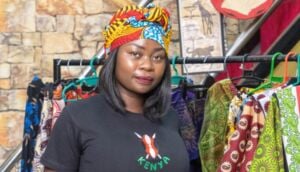and private sector programmes at Sightsavers
Wearing glasses and getting eye tests, in most developed countries, is now the norm. The stigma that used to be associated with wearing glasses has progressed to the point that they are now a fashion accessory, with some people owning several pairs to match their outfit or mood. Sadly, the same shift in social acceptance of eyeglasses among the urban poor in developing countries has not happened yet.
Primary eye care challenges in developing countries
Understanding what should be provided under primary eye care is still a moot point within the eye care community. The International Agency for the Prevention of Blindness describes it as a “frontline activity”, offering care to identify eye health issues before it becomes a more serious medical problem (2009). Those that need eyeglasses, tests or treatment should be able to get them. Sounds simple, but is it? Integrating primary eye care services into an existing primary health system makes a lot of sense, both from the patient’s perspective and in terms of building cost-effective and efficient public health systems in emerging markets. However, this approach has many challenges. Health workers are in short supply, overworked and may not always have the skills or ongoing training support to perform quality vision tests. It is not entirely pragmatic to simply add new tasks to their heavy workload and in urban areas there are many alternatives.
Viewing the issue through a business lens enables us to expand our thinking beyond the current and future constraints of public health and create consumer demand-focused and scalable models.
Using the ‘cool’ factor to overcome the stigma
The optical industry has pretty much transformed eyewear into cool, fashionable accessories. Walk down any British high street and there will be several different shops offering glasses and sunglass of all shapes, sizes and even by designer fashion brands. The urban poor in developing countries have not yet experienced this transformation. A recent Sightsavers study in Dhaka, Bangladesh, picked up on a number of people talking about the stigma associated with wearing eyeglasses. Some reported that they are mocked and discriminated for wearing them, being called ‘four-eyed’ or ‘blind’ instead of their actual names. Another study highlighted parents’ reluctance to make their children wear glasses, especially if a girl child, as they find them cosmetically unappealing (Balasubramaniam et al., 2013). In Dhaka, one woman aged 35 said, “I feel shy, so I don’t wear glasses. I worry about what people there (at work) will say if they see me wearing glasses”.
Sightsavers is working with Cornell University on an innovative new project to combat the stigma of glasses in the slums in Kolkata. The project team and I have just returned from home stays with families in the slums where we were conducting consumer insight research to inform the project development.
During our time in Kolkata people told us about the barriers that they face to wearing glasses. They said that their daughters may find it harder to get married if they wear glasses, valuing ‘pretty’ or ‘being cute’ more highly than being able to see properly. We were told by drivers that they may lose business if they are seen wearing glasses. One young man in the Dhaka study confirmed this view: “There are many passengers who do not get on the rickshaw of a rickshaw-puller who use spectacles, thinking that he might not see well and there is a chance of accident”.
In another study in Karnataka, India, 51% of young respondents thought glasses were a cosmetic blemish (Savur, 2011). A third (31,2%) felt that two people with refractive error should not marry and 6,1% said they would refuse to marry someone who uses eyeglasses.
At the end of my home stay in Kolkata, my host mother pulled out her glasses case from under a pile of clothes in her mother’s home next door. During all the time I spent with her cooking, cleaning, going to work, shopping, watching television, she didn’t use them once, despite having spent 800 INR (£8.50/US$13) on them a couple of years ago.
The Swatch approach to eyeglasses
These barriers represent the consumer ‘pain points’ associated with wearing eyeglasses. And they won’t be changed overnight. The insights that we gathered from talking with urban poor consumers in Kolkata highlighted how embedded the stigma is. But, we can start to address this by changing the conversation. If we continually stress that bad eyesight can be corrected by glasses, we only further reinforce the negative image that wearing glasses has for the urban poor.
What’s needed is the ‘Swatch approach’ to eyeglasses – eliminating the negative attributes, while enhancing the functional and style features. By doing this, we then offer consumers a completely different way of seeing and valuing glasses as a lifestyle option – slowly moving eyeglasses out of its negative limelight. We are still developing this innovative new product that will offer the urban poor an affordable, fashionable and multi-functional alternative. So watch this space!











